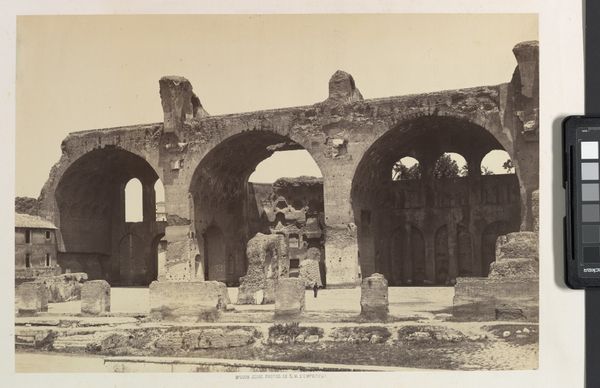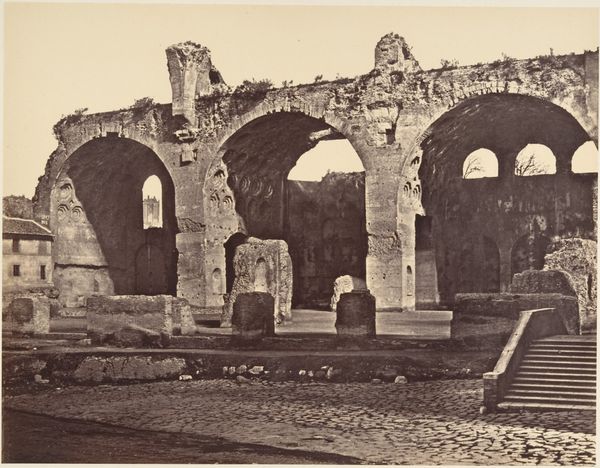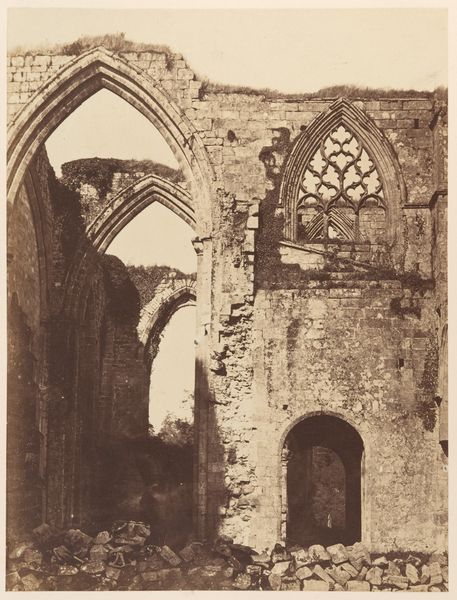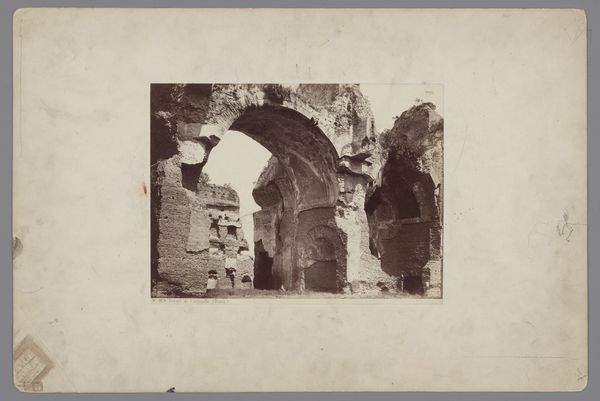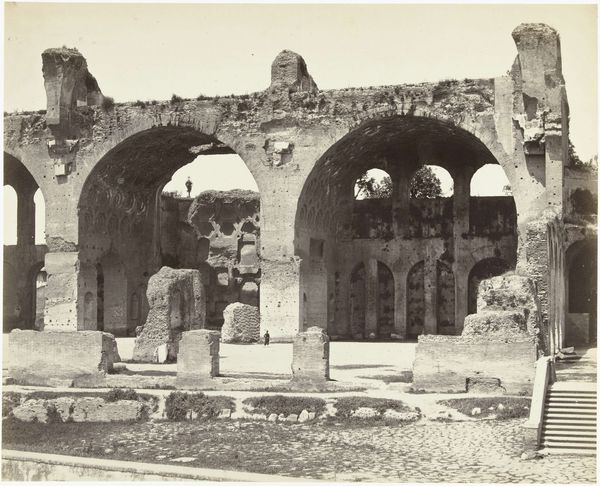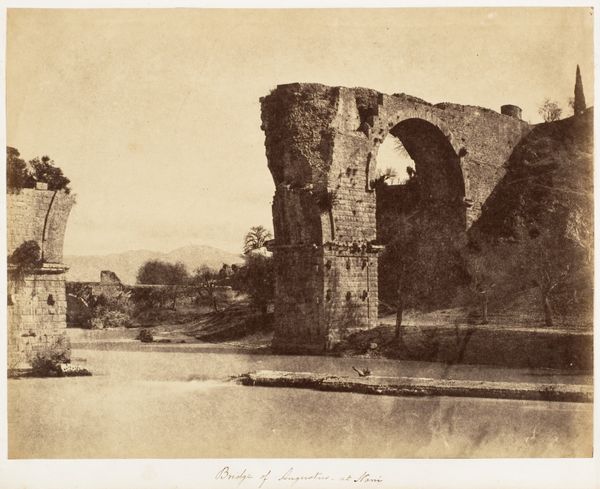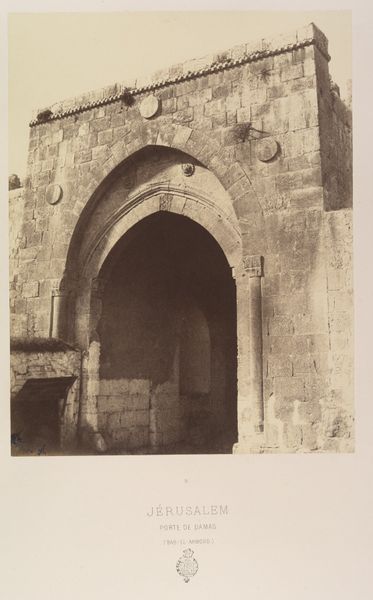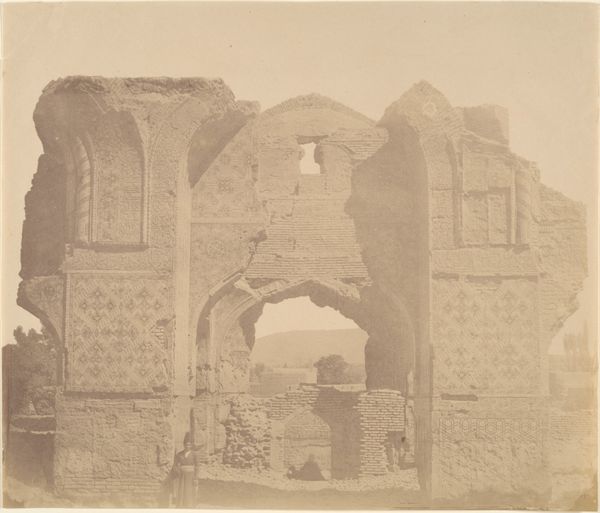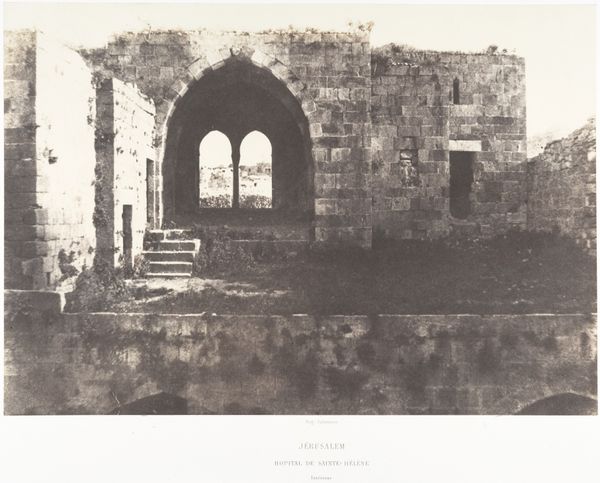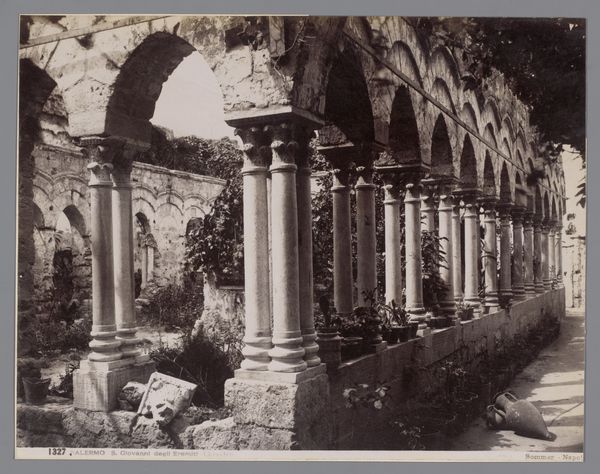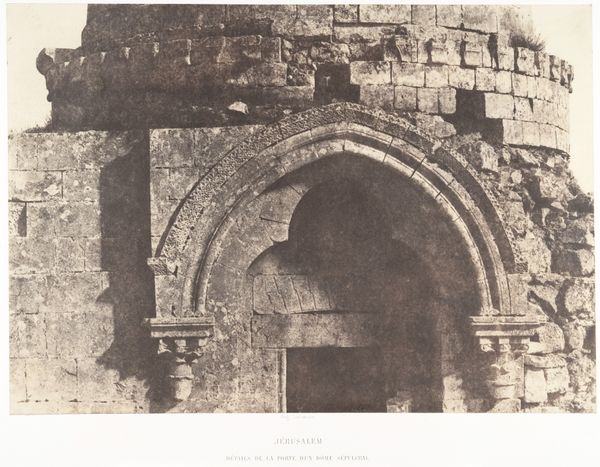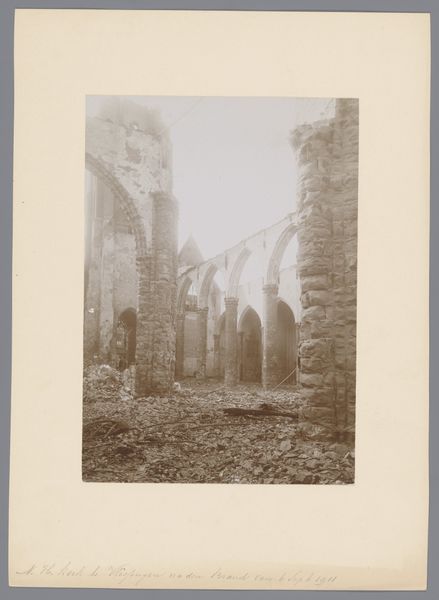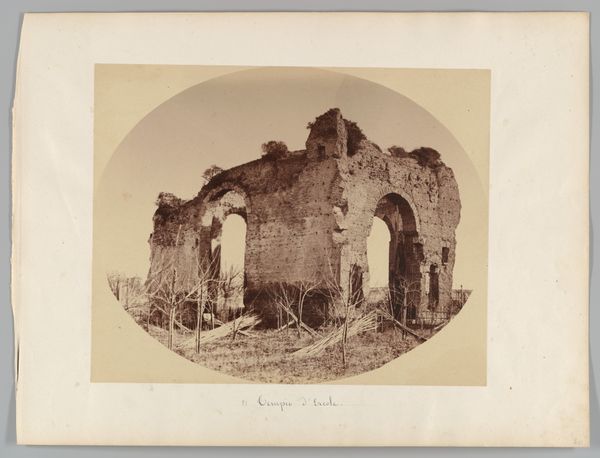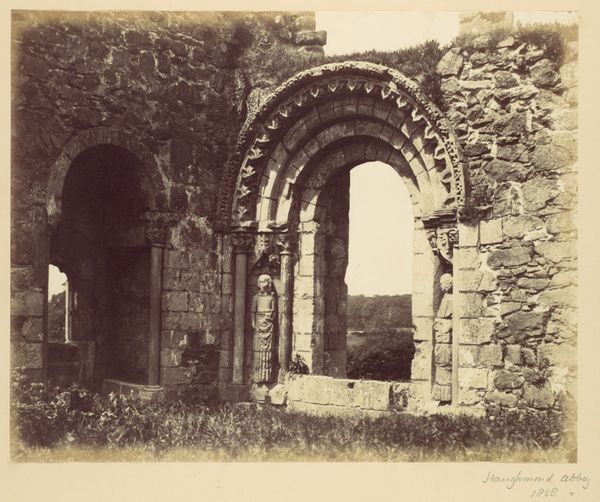
print, photography, albumen-print, architecture
# print
#
landscape
#
photography
#
ancient-mediterranean
#
albumen-print
#
architecture
Dimensions: 27.8 × 37.7 cm (image/paper); 40.7 × 45.5 cm (mount)
Copyright: Public Domain
Curator: Editor: Looking at Robert MacPherson’s albumen print, “Untitled (Basilica of Maxentius),” taken around 1857, I'm immediately struck by how the warm sepia tones give this image of ancient ruins such a strong sense of decay. What are your initial thoughts? Curator: The Basilica, frozen in a moment through the albumen print process. Consider the labor involved: quarrying the stone, constructing these monumental spaces for Roman power, then MacPherson's own labor in capturing this ruin with nascent photographic technology, a physical and chemical process itself. This photograph, itself a commodity, becomes a record of materials transformed by labor across centuries. Editor: That's fascinating! How does the choice of photography as a medium, especially this early photographic technique, contribute to our understanding of the subject, the basilica? Curator: Think about photography's rise in tandem with industrialization and mass production. This image, endlessly reproducible, brings the 'exotic' ruins of Rome to a Victorian audience. Consider, too, the inherent chemical processes of the albumen print. It's a blend of organic matter - egg whites, a byproduct of domestic consumption - and inorganic compounds used to halt time and create a static view of labor, use and obsolescence of architecture through material consumption. Does this connection to commodity culture reshape your view of the ruin? Editor: Definitely! It's not just a historical record, but evidence of how a photograph turns this historic ruin into something that is viewed by society at the time. Now, it's more clear how the process gives it significance! Curator: Precisely. The print makes the ancient accessible as object, which alters the consumption of labor through both processes of the ancient construction itself and through modern consumption in printed images for viewers around the world. Editor: Thanks! That really reframes how I look at early photography. Curator: Indeed. Reflecting on MacPherson's Basilica and the materiality of his era helps bridge an ancient structure and the means through which people view history with commodity and accessibility, forever connecting our material understanding of history and process with the present.
Comments
No comments
Be the first to comment and join the conversation on the ultimate creative platform.
